Nicolai Nucleon 16 Supre
Wheel Size: 29’’ or 29’’ front / 27.5’’ rear compatible
Travel: 165 or 178 mm rear / 160 to 180 mm front
Material: Aluminum
Price:
- Frame only: €3,939 (w/ VAT) / $4,800 CAD
Blister’s Measured Weight (size M, as built): 39.97 lb / 18.13 kg
Test Location: Washington
Reviewers:
- David Golay: 6’, 170 lbs / 183 cm, 77.1 kg
- Zack Henderson: 6’, 160 lb / 183 cm, 72.6 kg
Test Duration: 2 months
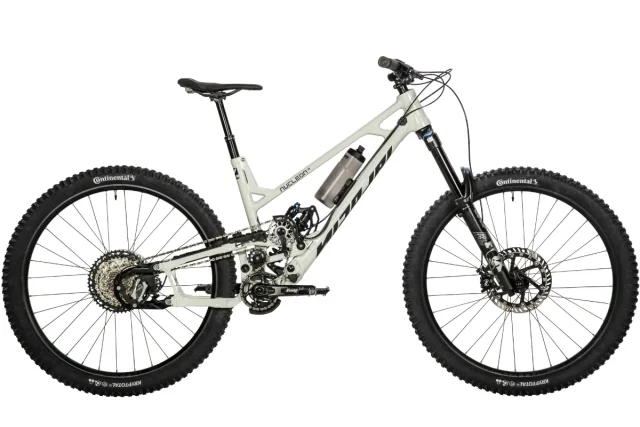
Intro
When Cedric Eveleigh launched LAL Bikes and his Supre Drive concept last year, he mentioned that he was working with a bike company to develop a production model that features the Supre Drive. Nicolai was not that company, but they’re still the first ones to drop a Supre Drive bike, the all-new Nucleon 16.
We spoke with Cedric about the Supre Drive back in Ep.94 of Bikes & Big Ideas, which you should definitely check out for the full backstory, but to quickly recap: the Supre Drive is essentially a reinvention of the derailleur drivetrain, which splits the two functions of a rear derailleur — shifting gears and maintaining chain tension — into separate pieces, with the goal of improving reliability and suspension performance.
The Supre Drive uses a standard Shimano 12-speed cassette, shifter, and chain, but uses a proprietary derailleur with a single pulley which is tucked inside the swingarm of the frame out of harm’s way, and handles gear shifting duties exclusively. A second pulley wraps around the back side of the chainring and moves on a spring-loaded arm to handle chain tension. The layout requires a frame that’s designed around the Supre Drive system and necessitates a high-pivot layout to accommodate the tensioner arm. The Nucleon 16 is the first production model to break cover.
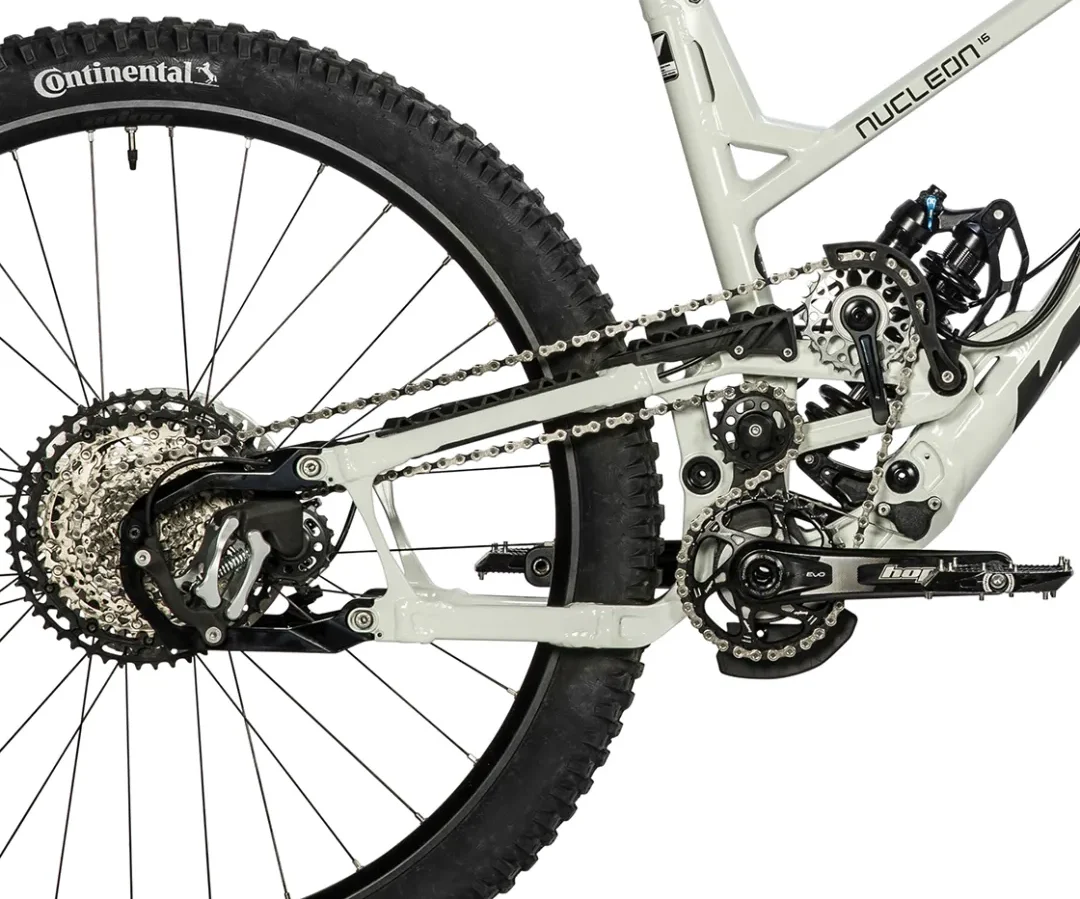
The Frame
The resulting frame layout is wild. In something of a departure from Nicolai, the Nucleon 16 is a high single-pivot layout with a linkage driving the shock. A rocker link cradled just above and forward of the bottom bracket actuates the lower end of the shock, and is pulled by a drag link connected to the swingarm. Despite looking like it might be tied into the linkage, the upper shock mount is fixed to the front triangle, but it features a flip-chip to toggle between a full 29er and mixed wheel configuration. The rear portion of the swingarm including the brake mount (direct mount for a 203 mm rotor), Supre Drive derailleur mount, and dropout bolts on and appears to be used to adjust the chainstay length, by swapping in different length dropout pieces.

The main idler pulley for the chain (which features 22 teeth — far more than most high-pivot bikes) is attached to the swingarm, and the tensioner pulley (the one directly above the chainring) pivots on an arm concentric to the bottom bracket shell to maintain chain tension across the range of gears and as the suspension compresses. A spring with a speed-sensitive oil damper is housed inside the downtube and controls the tension arm via a cable that emerges from the downtube just in front of the bottom bracket.
Elsewhere, things are a bit more normal. As per usual for Nicolai, the frame is made in Germany from aluminum. The Nucleon 16 uses a 157mm Super Boost rear end and a T47 bottom bracket shell — not the most common standards, but standards nonetheless. A ZS44/ZS56 headset and 30.9 mm seatpost are used, cable routing is fully internal, and an integrate bash guard for the chainring is also included; the Supre Drive layout makes a conventional upper guide unnecessary.
The Nucleon 16 can be configured with with either 165 or 178 mm of rear-wheel travel by running either a 60 or 65 mm stroke shock (in a standard 230 mm eye-to-eye configuration), and Nicolai says that forks from 160 to 180 mm travel are compatible.
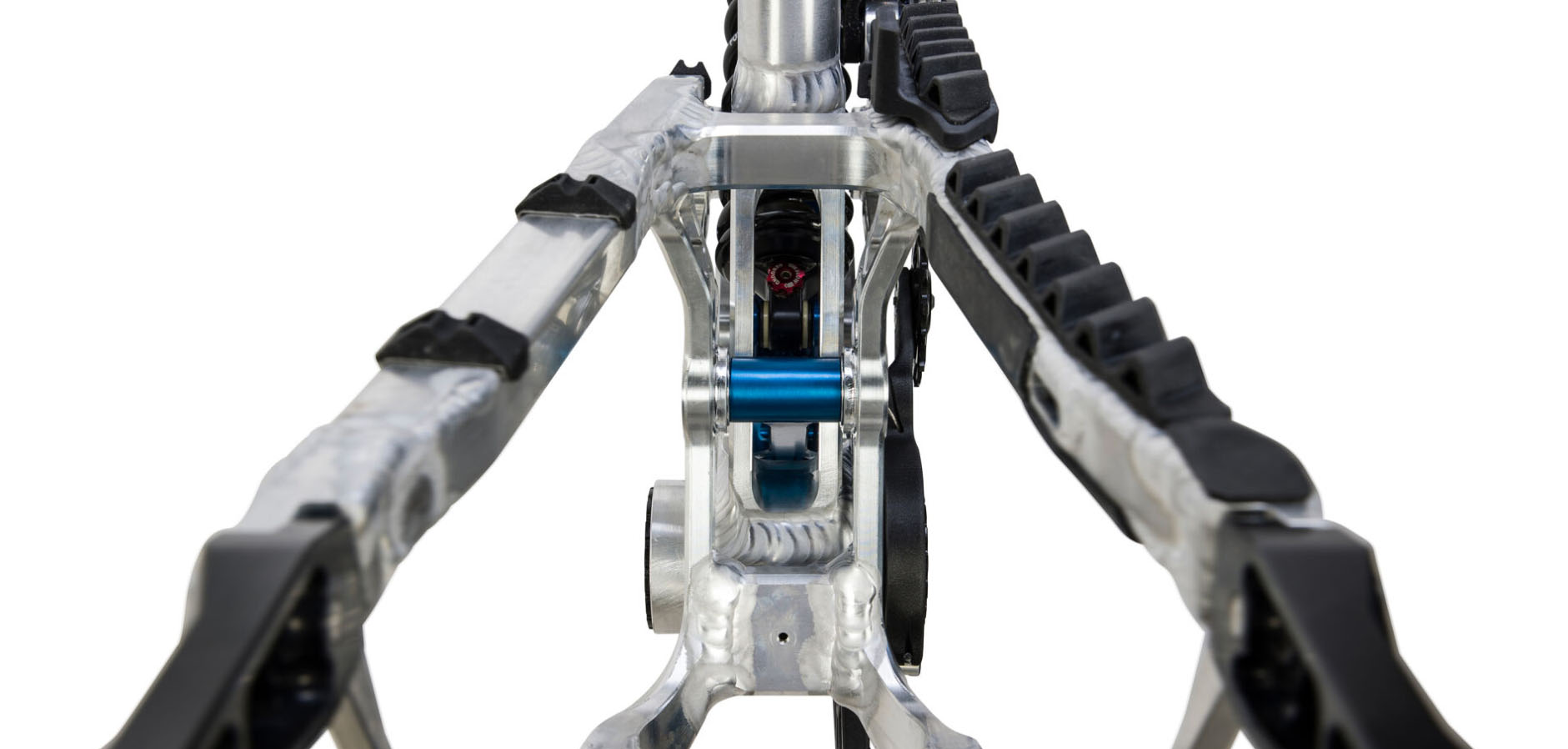
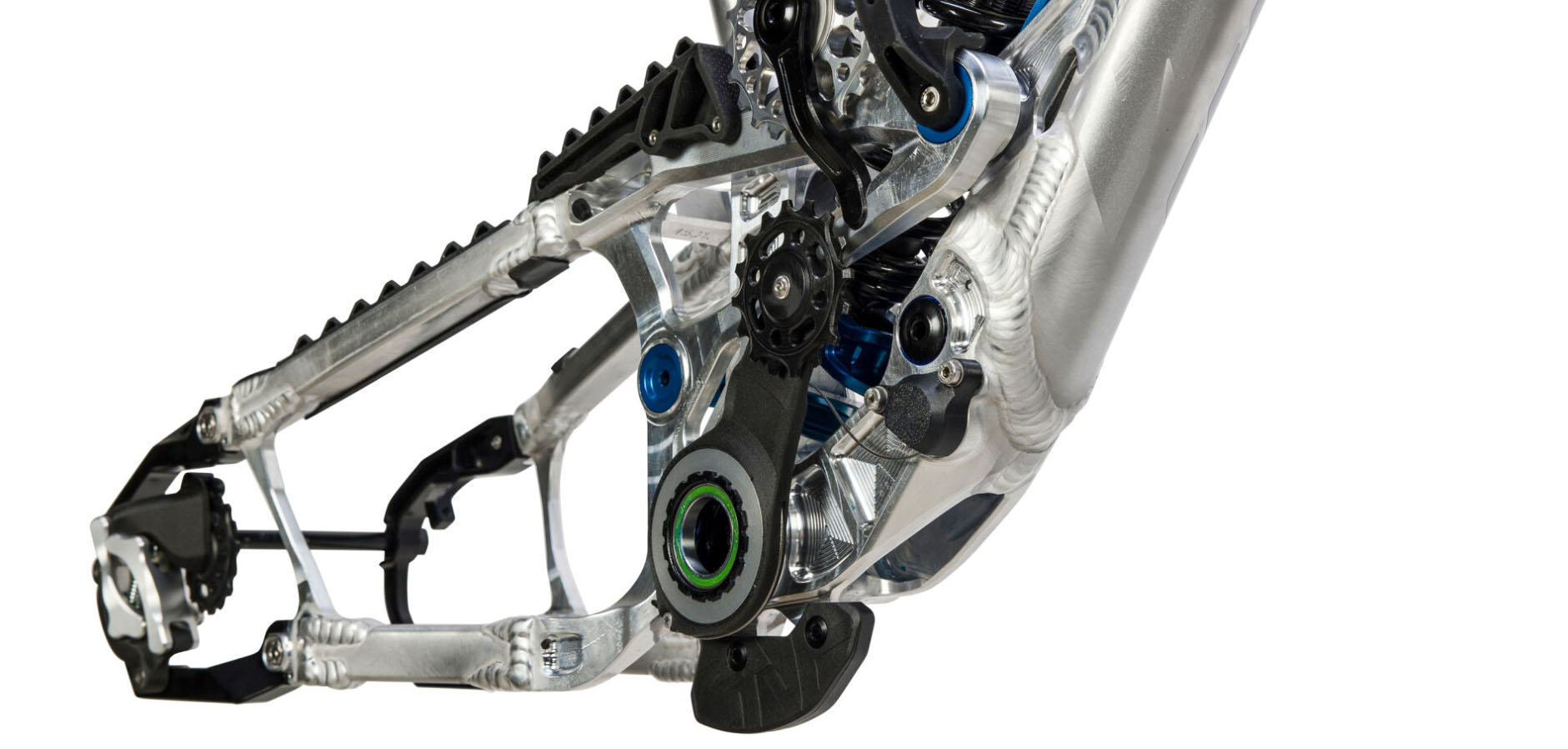

The Nucleon 16’s leverage curve is nearly straight and quite progressive, going from about 3.3:1 to a little over 2.2:1 at bottom out. The axle path is substantially rearward, hitting about 11 mm of rearward travel around the 105 mm vertical travel mark, before coming back forward by roughly 3 mm. Nicolai helpfully publishes anti-squat and pedal-kickback numbers across the entire gear range, and anti-squat is super high (over 150% at sag) in the very highest gears, but drops off to more like 110% by the lowest one; despite that, there’s almost no pedal kickback in the highest gears, but a significant amount in the lower ones. And despite the high-single-pivot layout, anti-rise is fairly moderate, starting just under 100% and falling to well under 80% by bottom out.
[And if all of that suspension talk didn’t make much sense, check out the Suspension Kinematics section of our recently updated Mountain Bike Buyer’s Guide.]
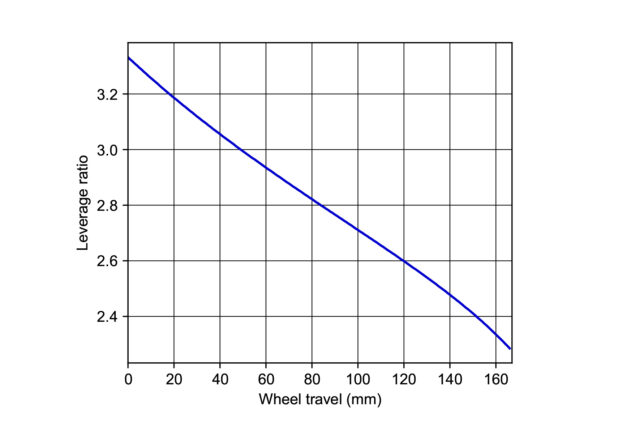

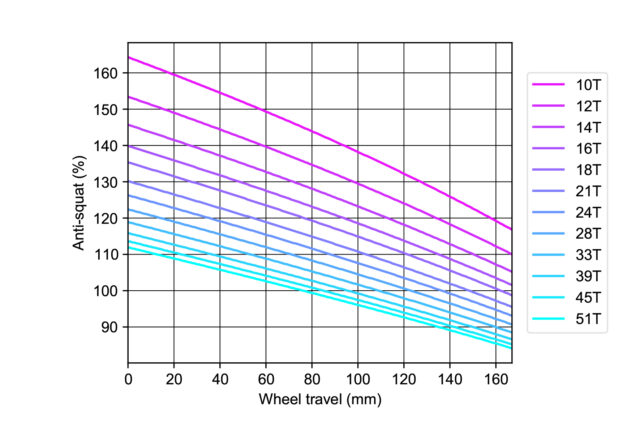

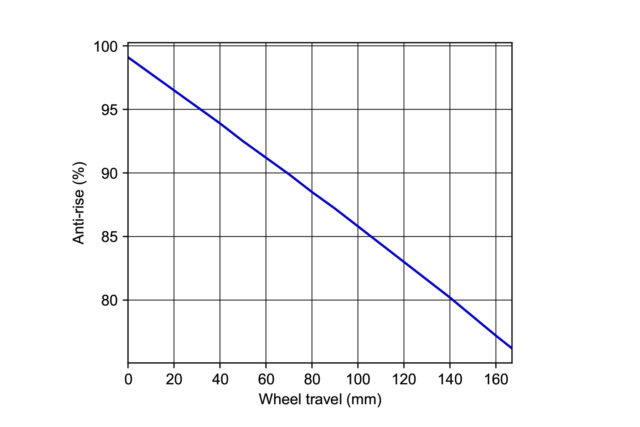
Fit & Geometry
Nicolai offers the Nucleon G16 in five sizes, labeled Small through XXL, and as per usual for Nicolai, they run quite large; reach on the Small frame comes in at 465 mm, and the XXL is a gargantuan 555 mm. Each successive frame size jumps 20 to 25 mm, with the Medium and Large frames clocking in at 490 and 515 mm, respectively. All four sizes get a 64° headtube angle, which is surprisingly not that wild for Nicolai, but the seat tube angles are notably steep, ranging from 78.2° to 78.8° (effective), getting slightly steeper in the bigger sizes. Chainstay lengths range from 445 for the Small and Medium through 459 mm on the XXL, with the Large and XL frames splitting the difference at 452 mm — all quite long, especially given the high pivot layout.
The geometry numbers listed above are all for the full 29’’ configuration; going to a mixed wheel setup steepens all the angles by a little over half a degree, adds a few millimeters to the reach, and trims the chainstay length by 4 mm in a given size.
Nicolai has long been known for their Geometron project, including the G16 and G1 that we’ve reviewed in the past, and a lot of the hallmarks of the Geometron bikes are here — most notably the extremely long reach, steep seat tube, and long chainstays — but the headtube angle is somewhat more moderate than those G-series bikes. Overall though, the Nucleon 16 still looks like a quite aggressive Enduro bike on paper, especially given the very large sizing.
The Builds
Nicolai says that bikes will be available in December 2022, with pricing starting at €3,099 for a frame only, or €7,499 for complete bikes. Spec details aren’t yet available, but we’ll update once they are.

FULL REVIEW
We’ve been pretty excited about the Lal Bikes Supre Drive since we first caught wind of it back in 2021, and our first on-trail impressions aboard a prototype version of the Nicolai Nucleon 16 were quite positive, too. But how would the production version of the bike ride, and how would the Supre Drive fare in a longer-term test? We were excited to find out.
Fit & Sizing
David Golay (6’, 170 lb / 183 cm, 77.1 kg): Nicolai’s recommended sizing puts me solidly in the overlapping region between the Medium and Large frames, but I really wasn’t tempted to size up to the Large. I think I probably could get comfortable on the bigger frame, but the biggest factor that would hold me back is that I mostly didn’t feel like I wanted or needed a big bump up in stability over what the Medium Nucleon 16 offers.
That said, the effective top tube (and through it, the seated pedaling position) on the Medium Nucleon 16 is a touch shorter than would be strictly ideal for me, personally. That feeling is most pronounced on flat ground, where the seated pedaling position feels quite upright and compact; once things point up a little more, the Medium Nucleon felt like a better fit.
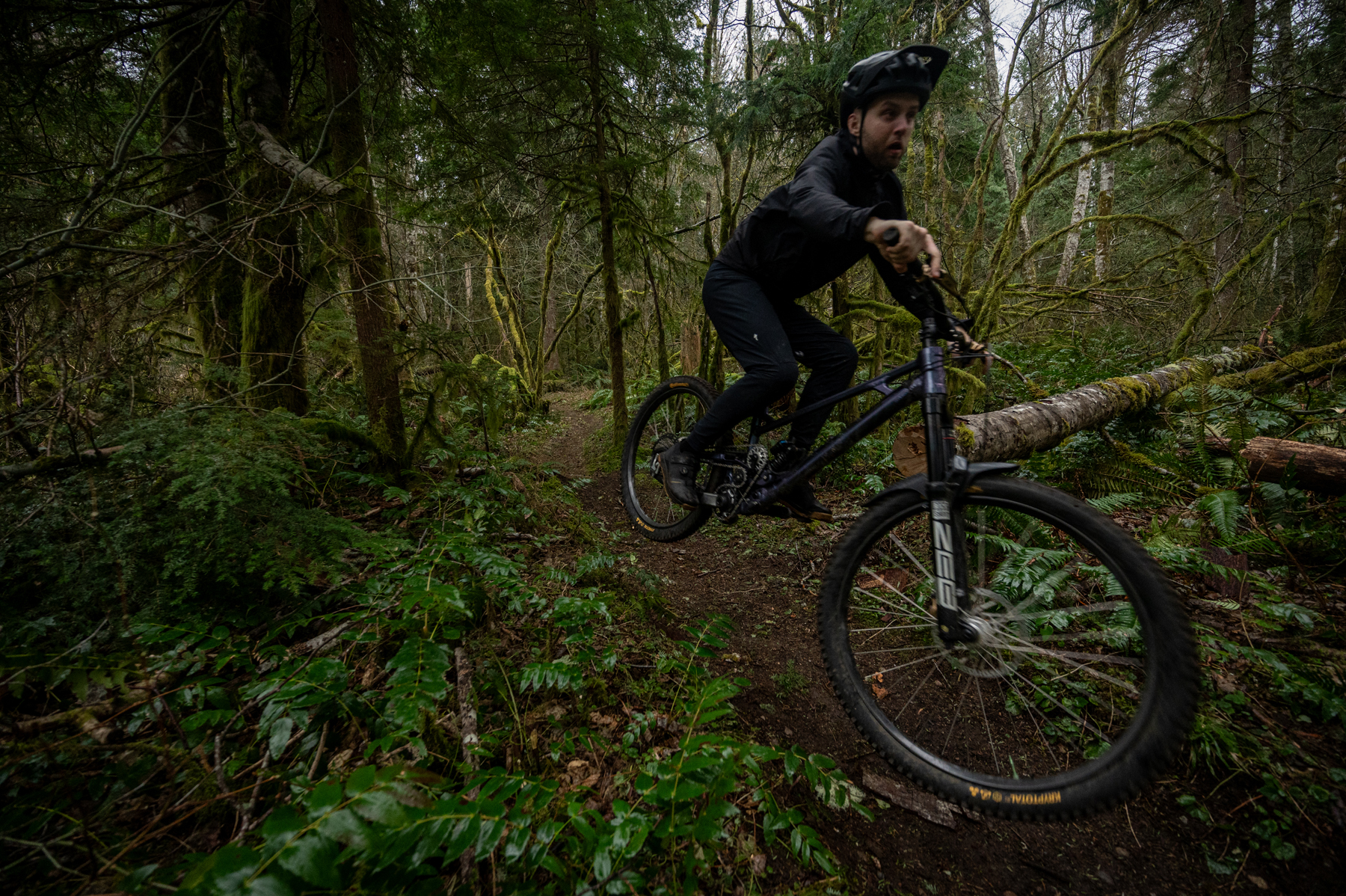
Especially for a winch-and-plummet-oriented Enduro bike, that’s not a bad tradeoff. And, given that I quite liked the fit of the Medium Nucleon on the way back down, its compact top tube wasn’t nearly enough to make me consider sizing up. Big picture, my advice to folks debating between sizes on the Nucleon would be:
(1) Nicolai’s recommended sizing bands seem generally reasonable, but they have a lot of overlap and many folks are going to be in between sizes on the chart like I am.
(2) Don’t pay too much attention to the nominal sizes — there are very few bikes where I’d ride a Medium frame, but this is one of them.
(3) The Nucleon’s steep seat tube and short effective top tube make it an easy bike to size up on, reach-wise, if that’s something you’re inclined to try. As per usual, don’t pick size based on reach alone.
Zack Henderson (6’, 160 lb / 183 cm, 72.6 kg): David tends to feel a bit more at home on some larger bikes than I do, likely down to his longer legs and wingspan, so I felt quite assured in terms of the Medium Nucleon 16 being the right size option for me, despite Nicolai’s unconventional nominal sizing.
I do have a fairly long torso, which also left me with a sensation of the Nucleon’s seated position being a little bit short for my typical preferences, but given that its reach measurement felt about right on the way down, I would not want to size up for fear of that descending position starting to feel too stretched out.
One option I might pursue on the Nucleon 16 is running the stem as close as possible to the headset, and then running a higher-rise bar. It would take a fairly high-rise bar, given the bike’s not-super-high stack, but running the stem as low as possible could buy back a few millimeters of effective top tube length and make that seated position just a bit longer.
Climbing
David: How you feel about the climbing performance of the Nucleon 16 will probably depend a bit on your expectations and how you’re using the bike, but as a winch-and-plummet sort of Enduro bike, the Nucleon does pretty well.
It’s not a super sprightly bike that encourages you to get out of the saddle and really hammer up climbs (few bikes with this much travel are), but if you’re content to settle in for the long haul and spin your way up, the Nucleon is an efficient and willing partner. There’s not much suspension movement so long as you’re maintaining a somewhat steady cadence, the seated pedaling position is well-suited to steeper climbs, and the Nucleon is an easy bike on which you can just turn off your brain and grind up a fire road for a few hours.

When things get more technical — especially ledge-y and tight — the Nucleon still does alright, but it feels a little less ideally suited to that task. Its rear-wheel traction under power is quite good, but between its 40-lb (18.1 kg) heft, quite-planted feel, and very steep seat tube, it can feel like a bit of extra work to loft up really heinous, ledge-y portions of climbs.
Of course, if technical climbing ability is a top priority, there are any number of shorter-travel, more compact Trail bikes that are better suited to the task than just about any 160+ mm Enduro bike out there — including, but very much not limited to, the Nucleon. The more the climb in question is just generally rough and loose, rather than full of big ledges that you need to really hoist the bike up onto, the more the Nucleon’s suspension performance becomes an asset rather than a hindrance. The Nucleon’s combination of solid efficiency and quite good traction under power makes it particularly adept at spinning its way up the hill, even if things are loose and traction is at a premium.
Zack: Not much more to add beyond what David had to say here — the Nucleon 16 is a hefty bike, but it pedals fairly efficiently. It can feel uninspiring for higher-cadence technical moves or where quick weight shifts are important to keep traction and momentum, but I found myself plenty happy pedaling along on steeper fire roads.
Like some other bikes I’ve ridden with steeper-than-average seat tube angles, the Nucleon 16 seemed to put a decent amount of pressure on my hands on flatter climbs, which could get uncomfortable on some longer road grinds. Steeper pitches were quite comfortable, and fortunately, there are a lot of those here in Bellingham, but it’s worth calling out that the steeper seat angle seems to encourage a body position that is more geared towards steeper ascents.
Descending
David: We’ve been on a lot of high-pivot Enduro bikes at this point, and they cover a pretty wide spectrum — from full-on go-fast chargers (Norco Range, Contra MC) to surprisingly nimble, playful options (Kavenz VHP16). I was curious to see where the Nucleon 16 would end up.
The short answer is “somewhere in the middle,” but the details are a little more complicated.
In terms of its suspension performance, the Nucleon is on the relatively planted and composed end of the spectrum. It’s not an especially lively, energetic-feeling bike, but it carries speed quite well through faster, rougher bits of trail. The Nucleon feels generally tailored to being the sort of go-fast Enduro race bike that’s more inclined to run over whatever’s in front of it than it is a super precise-handling, razor-sharp sort of one.
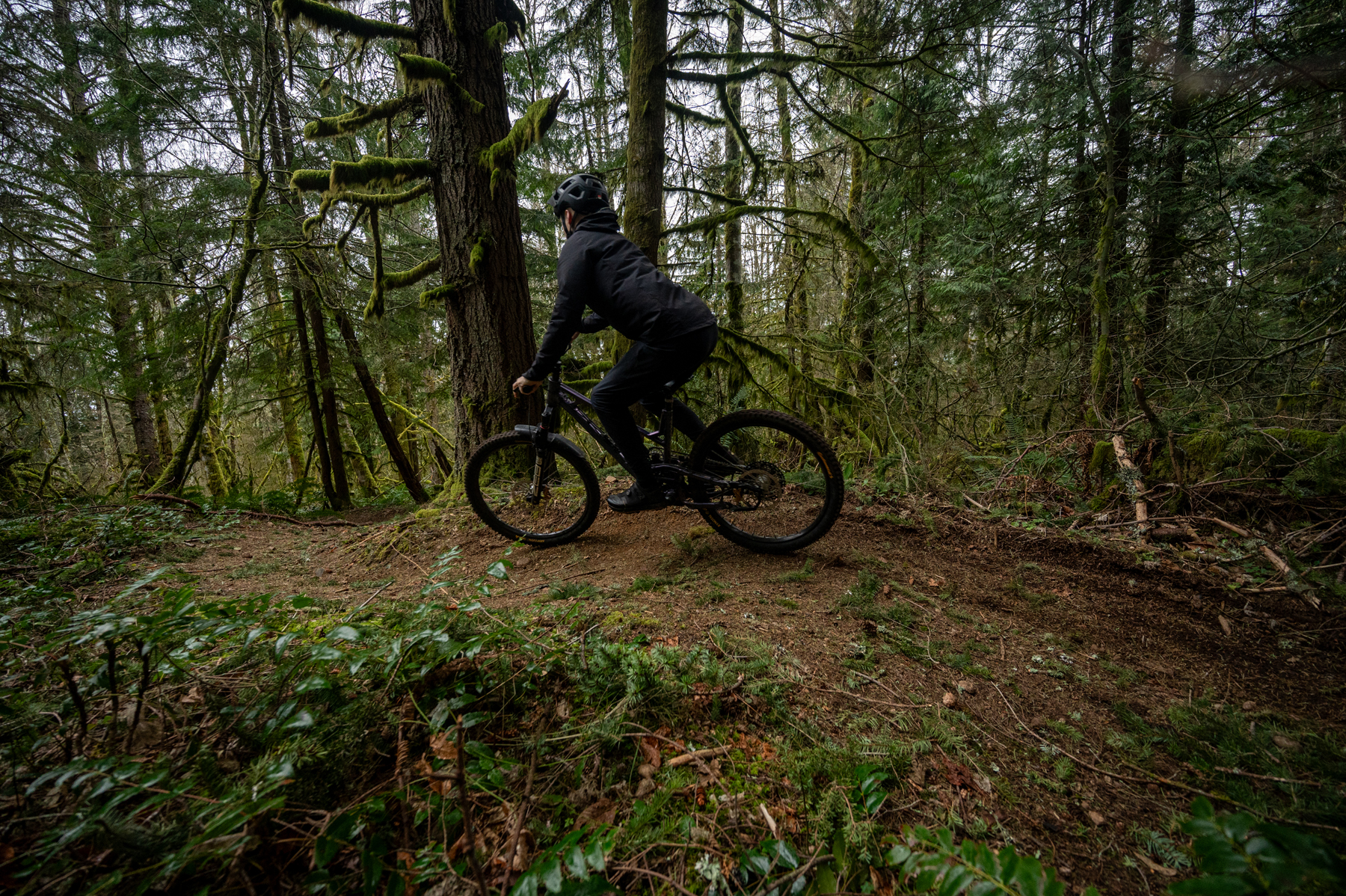
But that’s not the end of the story, because the Nucleon 16 does all that while being just a bit less outright stable and correspondingly quicker handling than most bikes that I’d say similar things about. It’s an interesting combination of traits, but one that I think could really click for the right folks.
I think I need to drill down on the distinction between being super sharp-handling (which, again, is not really how I’d describe the Nucleon) and being more nimble than you might expect (which it is). When I’m thinking about bikes that fall into the former camp — particularly in the context of more gravity-focused Enduro bikes — one of the key attributes they share is that they feel very precise in their handling, and are easy to put on the exact line you want, both by steering the bike and by getting light with your body inputs and boosting the bike into / over something when called upon.
The Nucleon’s fairly planted-feeling suspension (and probably its weight, to a lesser extent) make it just a little bit less instantly reactive to rider inputs than some of the other Enduro bikes out there that I’d call especially sharp handling. But the Nucleon is more eager to change direction than most of the other bikes I’ve been on that offer suspension performance that feels all that comparable to that of the Nucleon.
And for the right riders, that’s a compelling combination of traits. What the Nucleon gives up in being able to hit every line with millimetric precision, it makes up for in having the suspension to just run over what’s in front of it. And it does so while being more manageable in tighter spots / at lower speeds than a lot of the more smash-y big Enduro bikes out there.

The fact that the Nucleon’s headtube angle isn’t super slack — especially in the mullet setup, at 64.6° — is, I think, a big part of the reason why it behaves as it does. The Nucleon is still a fairly planted, stable bike overall, but its steering feels quicker than most of the bikes that I’d say similar things about, and the Nucleon feels notably quick to turn in as a result. Between the Nucleon’s suspension feeling relatively planted, its chainstays being long-ish (especially at sag), and its relatively quick steering from that not-super-slack headtube angle, the Nucleon initiates turns at moderate speeds relatively quickly through steering input. Now, the back will come around and follow, but it does feel like you’re steering the front wheel and just letting the back wheel kinda do its own thing at times — hence me describing the Nucleon as not feeling ultra-precise. But it all works nicely as a package and, again, the Nucleon’s rear suspension is happy to soak up what comes its way.
Unfortunately, we were only able to ride the Nucleon in its mixed-wheel configuration (the Super Boost rear end meant that I didn’t have a compatible 29’’ rear wheel to swap in). Given the resulting geometry changes, I suspect that going to the bigger rear wheel would make for a bigger step up in stability on the Nucleon than it does on a lot of other bikes (especially those that aim to mostly preserve geometry between their respective two wheel-size setup options). On the Nucleon, not only are you adding the 29’’ rear wheel, but with that, the headtube gets slacker, the chainstays longer, and the bottom bracket winds up lower in the 29er configuration — all changes that would, on their own, trend toward making the bike more stable.
In terms of its preferred body positioning, the Nucleon feels fairly neutral and adaptable, but if anything, it’s biased a little more toward a centered, upright stance than an especially forward one. Despite getting a little shorter in the mixed-wheel configuration, its chainstays are still moderately long, at 441 mm, and then you factor in the notably rearward axle path from the high-pivot layout, which makes them longer as the suspension compresses. Between that and the bike’s not-super-slack headtube angle, the Nucleon doesn’t require much weight over the front of the bike to keep it gripping there.
Zack: I think David did a good job of characterizing the Nucleon 16’s interesting combination of suspension-related traits and geometry-related traits.
Like him, I found the Nucleon 16’s suspension to feel quite deep and forgiving, but also not all that eager to return energy back to me. This meant that the Nucleon offered great traction in some of the very wet conditions I rode it in and felt confident and comfortable in some of the really rough, not-that-fast terrain I subjected it to. On the other side of that coin, it was a bit uninspiring on smoother sections of trail, where pumping rollers and corners are needed to generate speed.
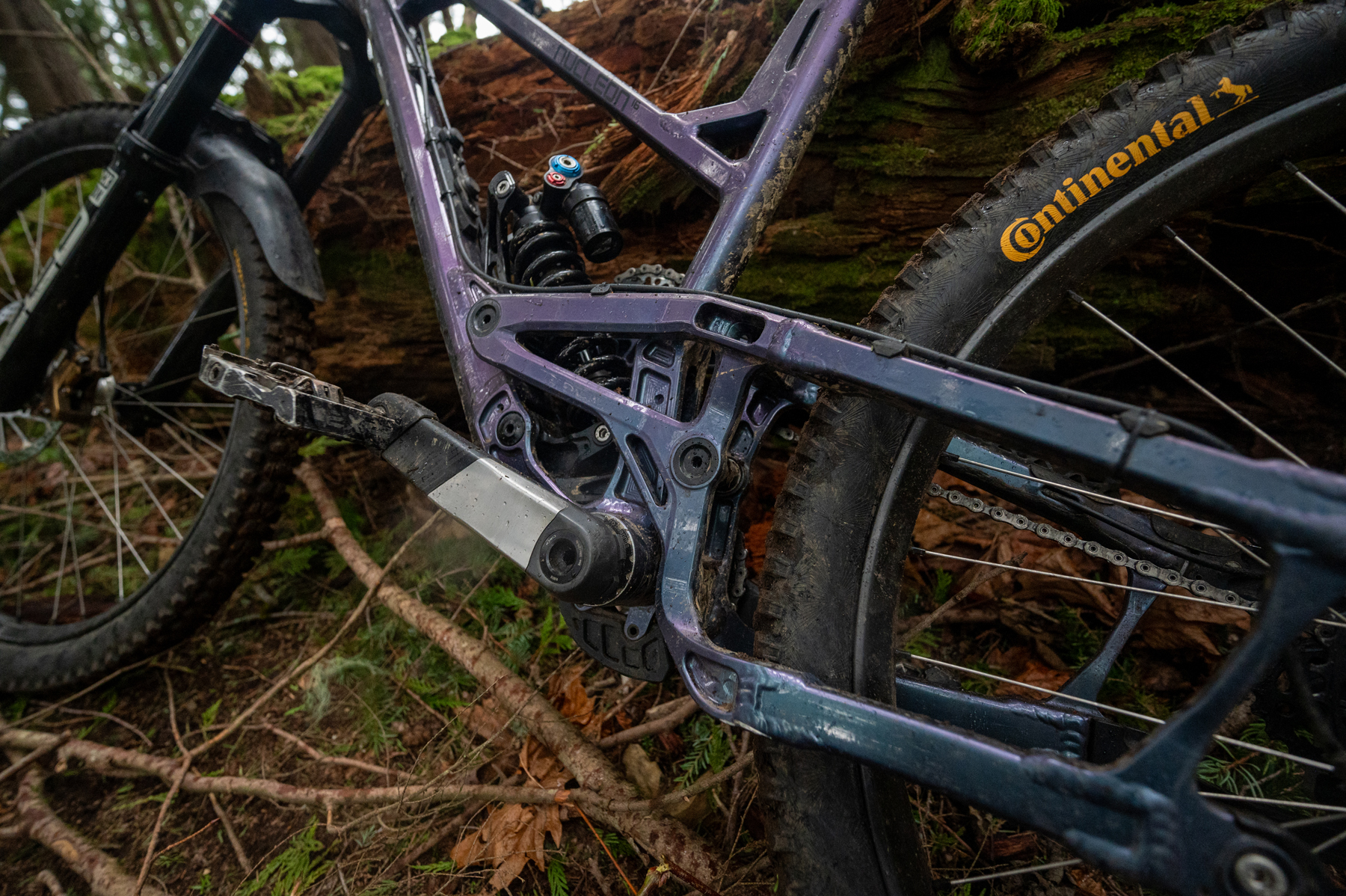
At the same time, where slacker Enduro bikes can feel slow to change direction at lower speeds, the Nucleon was much more responsive than most. That meant that the steering was a bit less composed at super high speeds, but lower-speed awkward sections were surprisingly easily navigated. It’s a bike that I found to thrive on trails reminiscent of Vancouver’s famed North Shore, where big holes and steep, janky rock features meet tight corners that demand quick direction changes — terrain where I’ve found a lot of other longer, slacker Enduro bikes to feel unwieldy.
The Supre Drive
David: Of course, one of the big questions about the Nucleon is how the Supre Drive works, and the short version is “quite well.”
Mostly, there’s very little difference between the shifting feel and performance of the Supre Drive and the normal Shimano 12-speed drivetrain that it’s based on (our review bike has an XTR shifter and chain with an XT cassette).
Downshifting is maybe very slightly slower on the Supre Drive, I think because there’s just a little more chain wrap around the cassette, and you therefore need to turn the wheel farther to finish a shift, but it’s pretty subtle in the lower gears and not noticeable at all in the higher ones. I can tell a slight difference if I’m paying attention, but as soon as I switched off that part of my brain and started riding, I forgot about it. The Supre Drive quickly faded into the background and felt… really normal.
It helps that the Supre Drive is also very, very quiet. There’s essentially no discernable chain slap, and we’ve had no issues with dropping chains or other chain control issues. There’s also not much drag or noise when you’re pedaling — the Nucleon 16 is one of the better high-pivot bikes I’ve ridden on that front. But it’s the lack of noise when descending, and the lack of movement from the chain, that I’m most jazzed about. There’s no distracting chain slap, and I never bounced the chain around enough for the drivetrain to miss a beat when trying to sneak a pedal stroke out of a corner — something that happens on conventional drivetrains from time to time — or dropped a chain or anything else. It just works.
The Supre Drive also really isn’t as complex as it might look. The derailleur is simplified in not needing a cage or second tension pulley; the tensioner arm that replaces those is essentially just a machined aluminum arm with a pulley on it, which pivots around the bottom bracket shell on a big bearing. The spring and damper that control it are quite simple and tuck away neatly into the downtube, and then there’s just a regular idler pulley, same as any other high-pivot bike. It looks different, for sure, but at the end of the day, it’s mechanically quite straightforward.
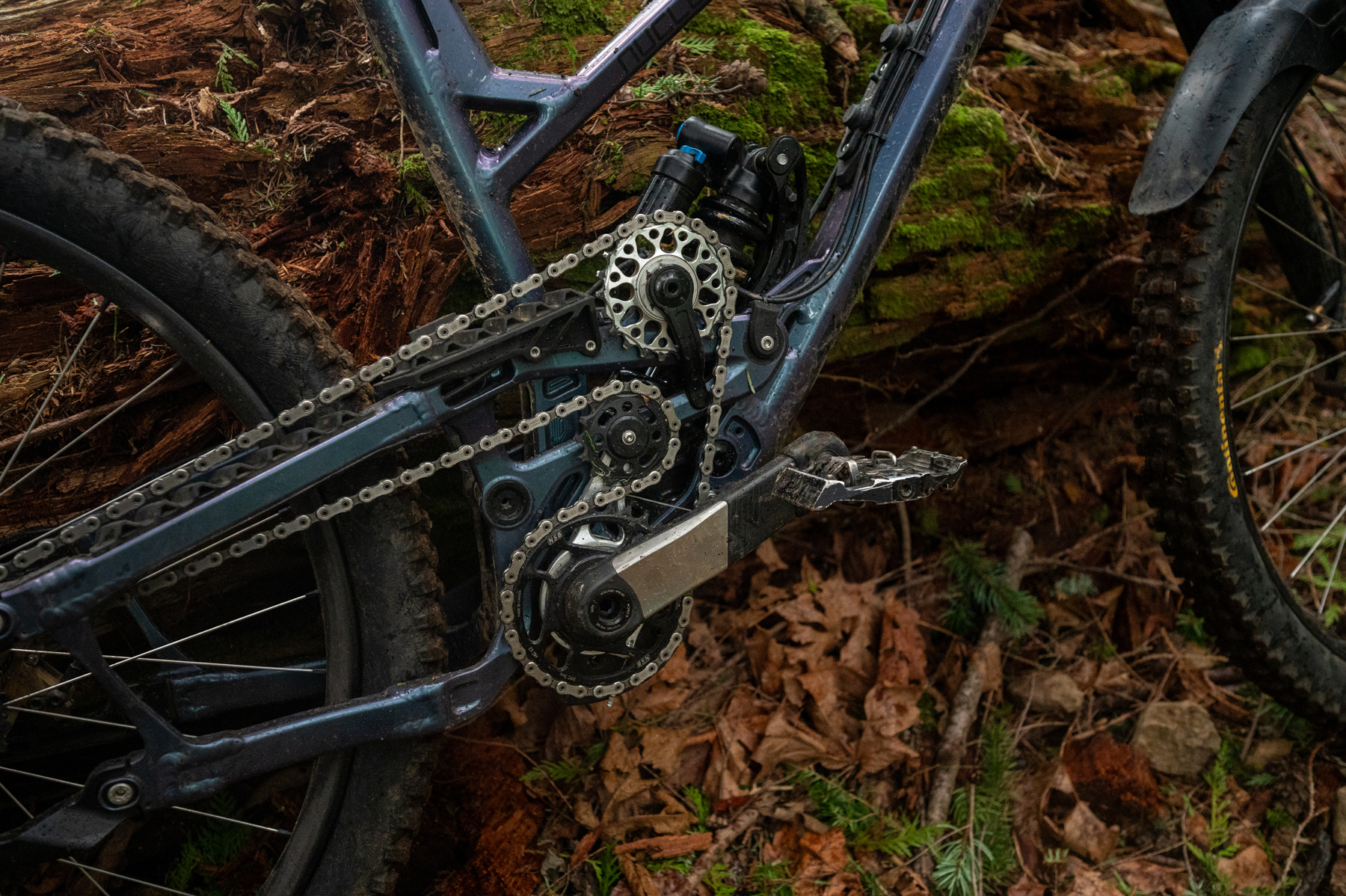
That said, changing the cable on the tension arm / damper is slightly tricky, mostly because the step of winding it around its drum takes some dexterity. It’s not that hard once you get the hang of it, and it’s not something that should need doing all that often anyway. (I tried it just to see how challenging it was, not because it actually needed replacement.) But that one (minor) rough edge seems like the only thing that wouldn’t be 100% easy to live with when using the Supre Drive in the long run, and it’s no worse than a frame with not-fully-dialed internal cable routing in terms of fiddle factor.
Then of course, there’s the main reason for the Supre Drive existing in the first place — the derailleur is much, much better protected than it is on a bike with a conventional drivetrain. Not fearing blowing up your derailleur on a rock or stump is nice (and not actually doing it and ruining a ride is super nice). But the Supre Drive derailleur also seems like it needs less regular adjustment than a normal cable-actuated derailleur to keep it from flopping around and getting slightly tweaked. Given its mounting interface, there’s no B-tension equivalent to worry about, and the limit screws are easily accessible, nicely labeled, and I never needed to touch them over my time with the Nucleon.
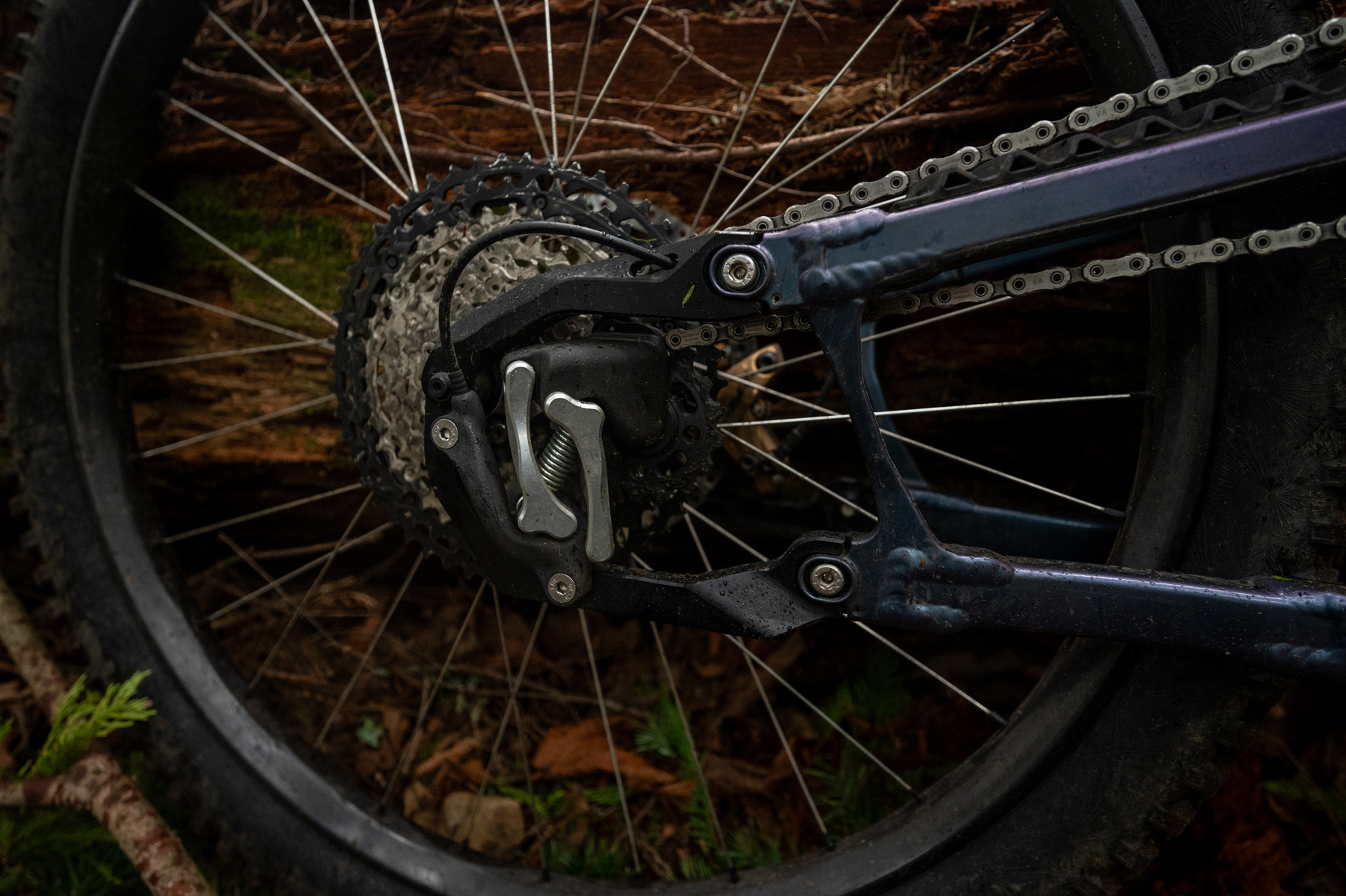
Zack: The Supre Drive is an impressively functional approach to packaging a derailleur and chain into a bike, and while it’s quite complex-looking from afar, a closer look reveals a system that is both robust and elegant in its execution. By decoupling the jobs of maintaining chain tension and managing lateral movement across the cassette, the Supre Drive has effectively created more mechanically specialized parts to manage chain movement and shifting, and they work exceedingly well.
Like David, I was particularly impressed by this system’s lack of noise. From my first ride on the Nucleon 16, the bike was incredibly quiet through some very rough and awkward terrain, and it never faltered when it came to chain retention or shifting performance. I didn’t spend as much time with the bike as David did, to be fair, but I didn’t need to touch the cable tension or limit screws even once.
At the same time that I’ve had the Supre-Drive-equipped Nucleon 16 in my garage, I’ve been spending time on another bike (the Ibis HD6) with the cream-of-the-crop SRAM XX Transmission derailleur. The Supre Drive isn’t electronic and it looks much more complex in comparison, but in my experience, the Supre Drive provides shifting that is more consistent than the XX Transmission while doing a better job of managing chain motion while riding. That’s quite an achievement for a system that’s still in its first public iteration.
The Build
David: Nicolai doesn’t offer standard builds on the Nucleon 16, so I’m not going to go into too much depth on the spec of our review bike.
It came from Lal with a mix of parts I like quite a bit (e.g., RockShox ZEB Ultimate fork, Fox DHX2 rear shock, TRP DHR Evo brakes, etc.) and a few I don’t (Schwalbe Magic Mary / Hans Damph tires, weird ISM seat). I swapped the latter couple of things out and all was well. I did find myself preferring to run a surprisingly high spring rate on the rear shock but the Nucleon worked nicely once I got that sorted out. (For reference, I bounced around between 550 and 600 lb/in, but mostly preferred the 600 — which is heavier than Nicolai recommends for my weight, and more spring than I’ve run on any other bike in this travel range in recent memory.)
Big picture, I’d just suggest you build the Nucleon 16 as you would most other Enduro bikes — burly suspension and brakes, whatever you’re into for wheels and tires, etc. Nothing too weird going on here. And of course, if you’d like to discuss the details of your planned Nucleon 16 build (or whatever else, really), BLISTER+ members can always drop us a line via the form in the Member’s Clubhouse and get one-on-one advice from me and our other bike reviewers.
I will touch on a few frame details, though. As per usual for Nicolai, the build quality on the Nucleon frame is excellent — the welds are gorgeous, the pivot hardware is beefy and features nice secondary sealing for all the bearings, and so on. The cable routing is a little haphazard, though. I get the impression that the Nucleon was originally designed for headset cable routing (which is how a bunch of the pre-production bikes were shown) but Nicolai backpedaled on that and added external guides instead.
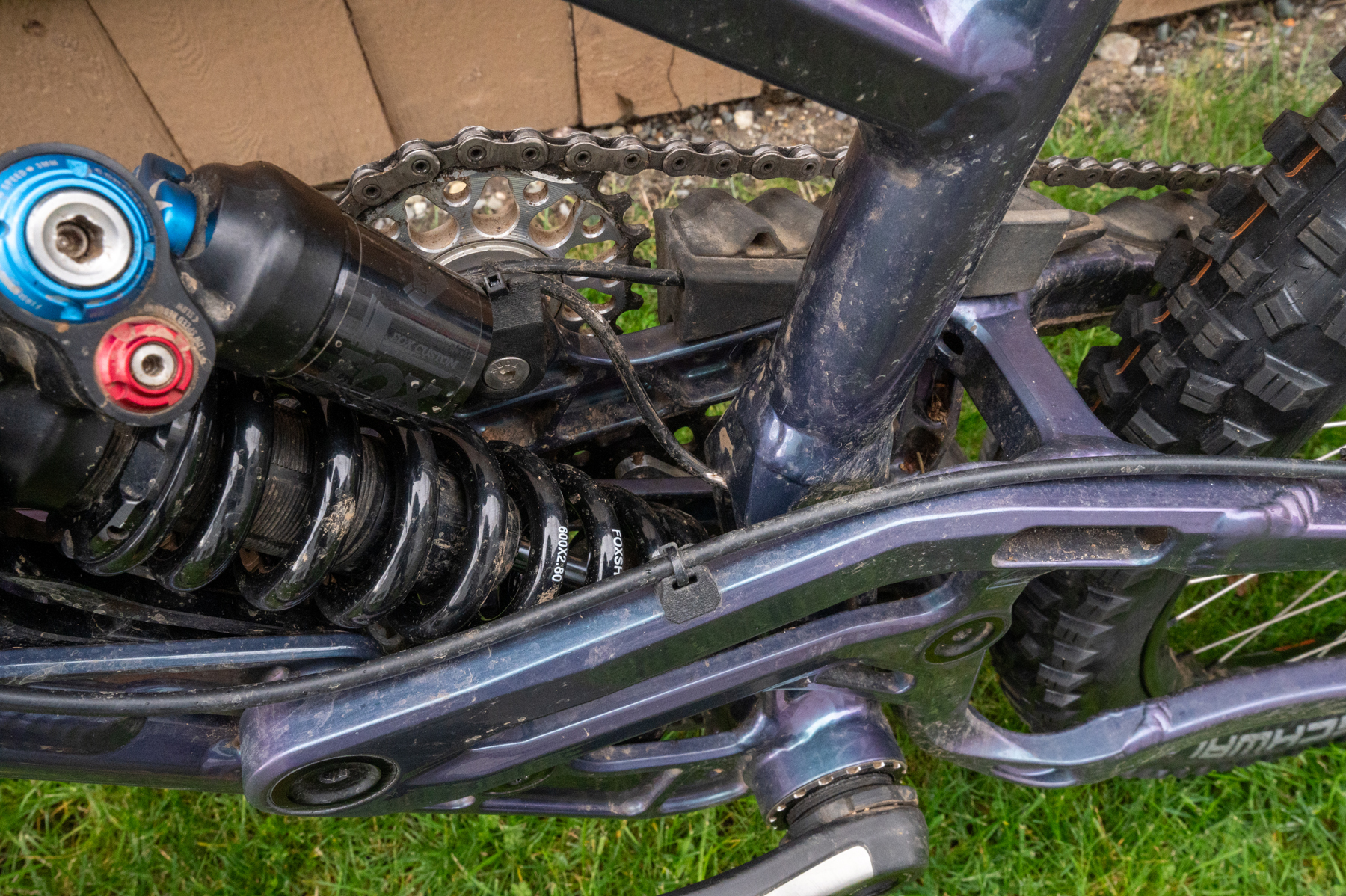
I don’t want to be too hard on them here, because I’m absolutely in favor of external routing in general, and anti-headset-routing in particular. But the 3D-printed stick-on guides they came up with are a little clunky and the dropper post housing, in particular, has to do a couple of big bends to go up over the idler pulley housing, back down behind it, and then up again into the bottom of the seat tube. It works okay but adds a noticeable amount of friction to the lever action, and the housing is showing some noticeable wear where it goes back into the seat tube.
It’s also worth noting that the rear brake caliper placement means that the routing will work much better with a rear brake that uses a banjo fitting that can be rotated around to point upward away from the caliper. The TRP DHR Evo brakes on our test bike work nicely, and most modern high-end brakes should as well, but ones without a banjo fitting (e.g. the entry-level SRAM Maven Bronze) might not be great.
[For reference, the rear brake caliper is located where it is because the Supre Drive derailleur positioning means that the rear wheel needs to move straight back to exit the frame, rather than dropping down like it does on most bikes. It all works just fine and isn’t hard to take on or off, but is a little different from most other bikes on that front.]
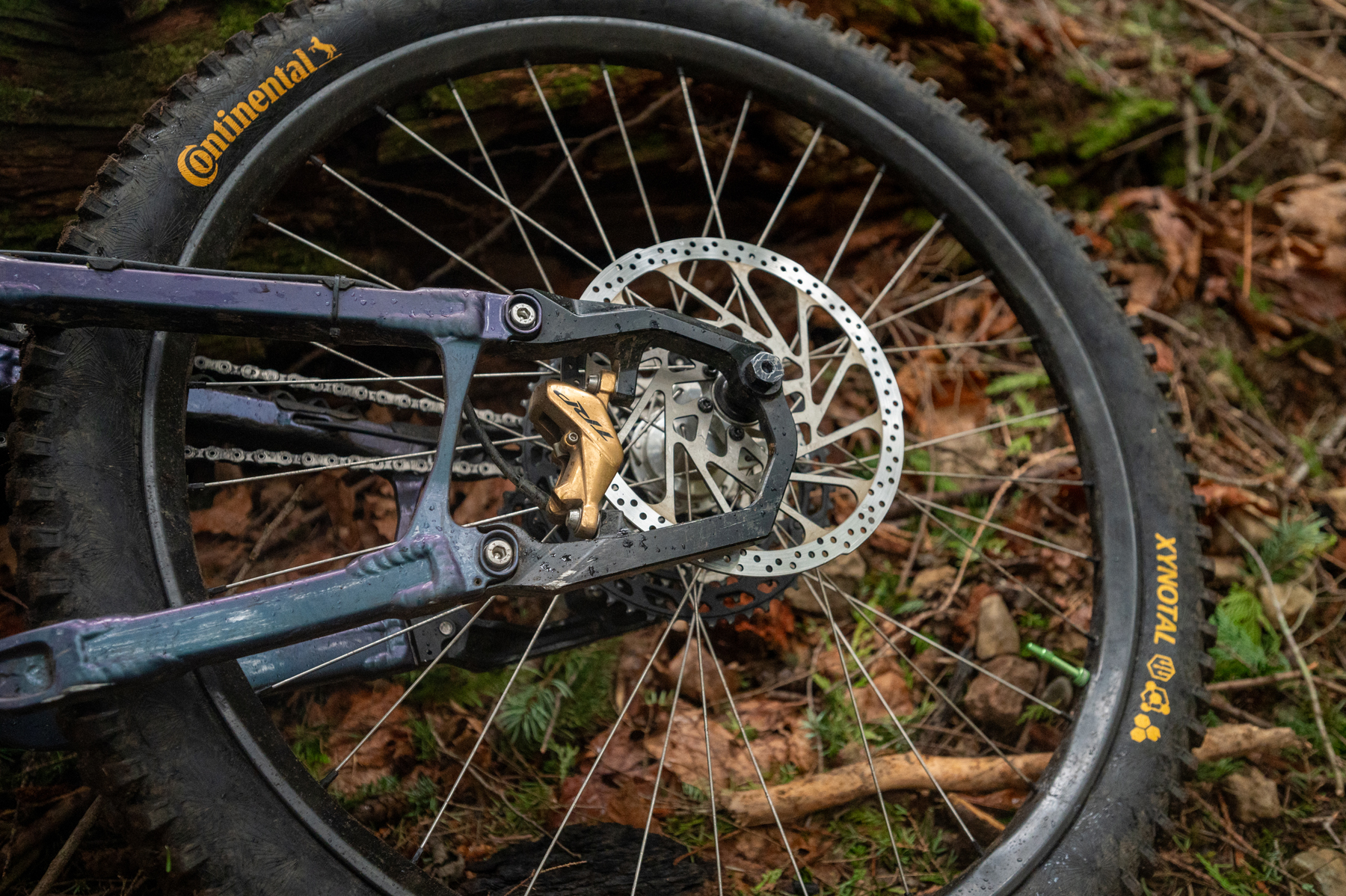
I also found the Fidlock magnetically-stowed water bottle that comes with the Nucelon 16 to be pretty annoying, simply because it rattles against the underside of the top tube and makes a bunch of noise. Clearance for a regular cage and a 26-oz bottle is a little tight, but a standard 22-oz one fits fine.
Finally, it’s also worth noting that the Supre Drive layout does require an extra long chain — 142 links, as configured on our review bike. Plan on splicing two together, and using pieces from the second chain to get subsequent replacement ones up to length. A standard Shimano 12-speed chain has 126 links, so one extra chain would be enough to get seven Nucleon 16-length chains, at least on our Medium frame with the shortest chainstay option Nicolai offers.
Who’s It For?
David: There’s an easy and a hard part to this answer. The easy bit is that the Nucleon 16 Supre is for folks who are tired of smashing derailleurs on stuff, and/or are drawn to the quiet, dependable performance of the Supre Drive — which genuinely works great.
But I don’t think you need to specifically have major gripes with conventional drivetrains for the Nucleon 16 to be appealing, because it’s a well-built bike with a combination of ride traits that I haven’t quite found anywhere else, too. (And there is a version with a normal UDH instead of the Supre Drive if you want to go that route.) The Nucleon 16 blends a fair bit of stability and quite planted, composed suspension performance with handling that’s appreciably quicker than most other bikes with suspension that feels at all similar, and it’s easy to imagine that combo really clicking for the right folks.
Zack: It’s difficult to look at the Nucleon 16 without fixating on the Supre Drive, which is funny, because the Supre Drive really does drift into the background while it provides solid, quiet, and dependable shifts. The Nucleon 16’s ride is much more defined by its own unique combination of suspension and handling traits, along with the outstanding build quality associated with Nicolai.
The Nucleon 16 is quite a bit of bike to manage, mostly due to its heft, but it’s a standout option for riders who might shy away from flow trails in favor of some of the lower speed, uber-technical, and tight trails that others might brush off as “old school.” It can do all the other things, too, but for riders that love slower, high-precision technical trails, the Nucleon 16 manages to blend a combination of forgiving suspension and quick, responsive handling that’s hard to find elsewhere.
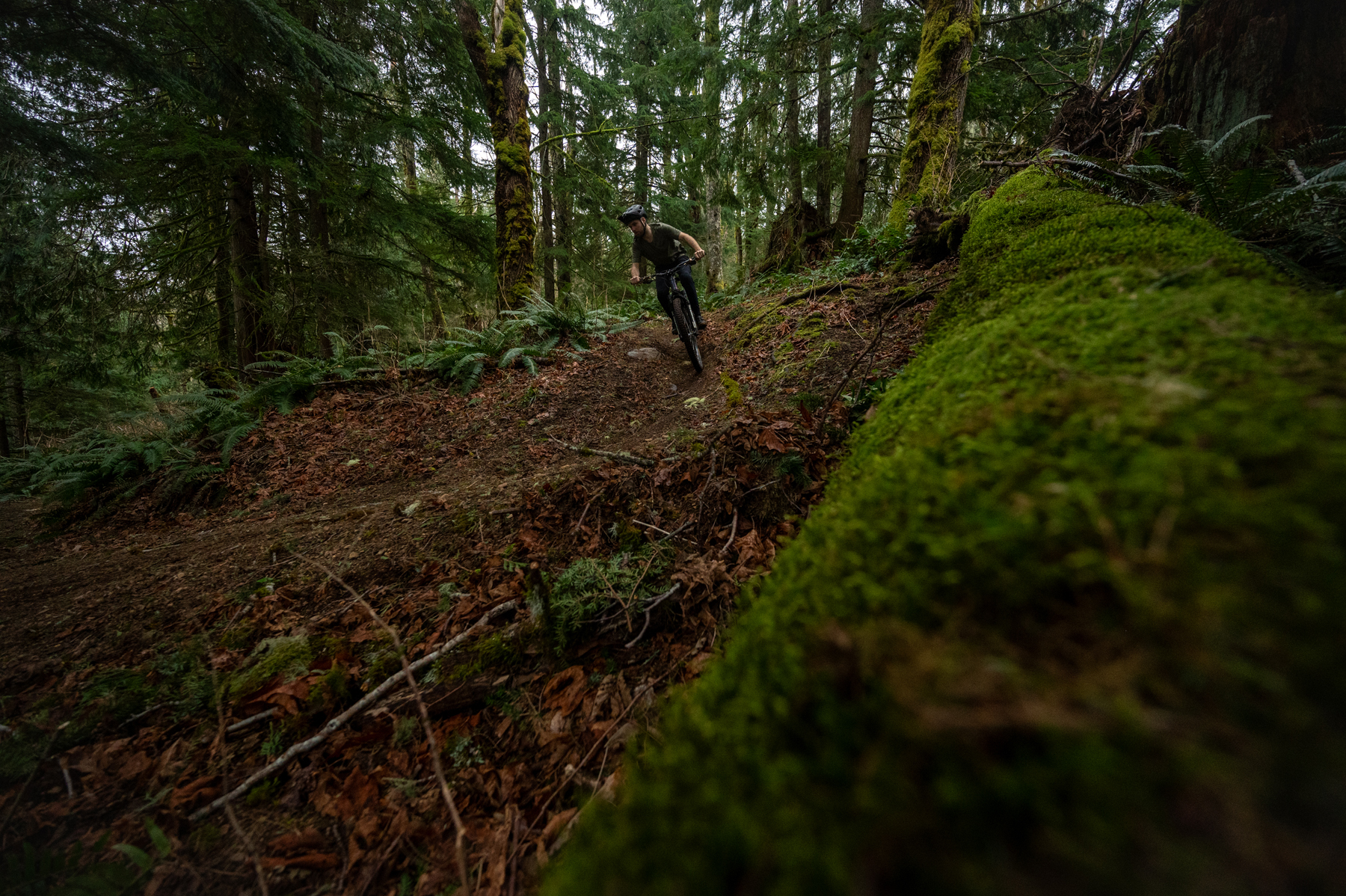
Bottom Line
The Nicolai Nucleon 16 Supre Drive doesn’t look or ride like anything else out there, but it’s far, far less quirky than its wild-looking layout would suggest. The Supre Drive works great, is super quiet, and mostly just feels like a normal Shimano drivetrain once you get going. The Nucleon 16 itself offers a combination of ride traits that stands out from the market, but that feels entirely coherent and is likely to really work for some folks. It’s an impressive first offering for the Lal Supre Drive, and hopefully, we’ll see some more options across a range of bike categories soon, because there’s a lot to like here.
Deep Dive Comparisons
BLISTER+ members and those who purchase our Digital Access Pass can check out our Deep Dive comparisons linked below. Get our Digital Access Pass to view all our Deep Dives and Flash Reviews, or become a BLISTER+ member today to get access to that and a LOT more, including the best worldwide Outdoor Injury Insurance, exclusive deals and discounts on skis, personalized gear recommendations from us, and much more.
Check out our Deep Dive comparisons of the Nicolai Nucleon 16 Supre to see how it compares to the Trek Slash, Kavenz VHP 16, Contra MC, Forbidden Dreadnought, Chromag Lowdown, YT Capra, Santa Cruz Nomad, Santa Cruz Megatower, Cotic RocketMAX, Orbea Rallon, Yeti SB160, Pivot Firebird, Nicolai G1, and Norco Range

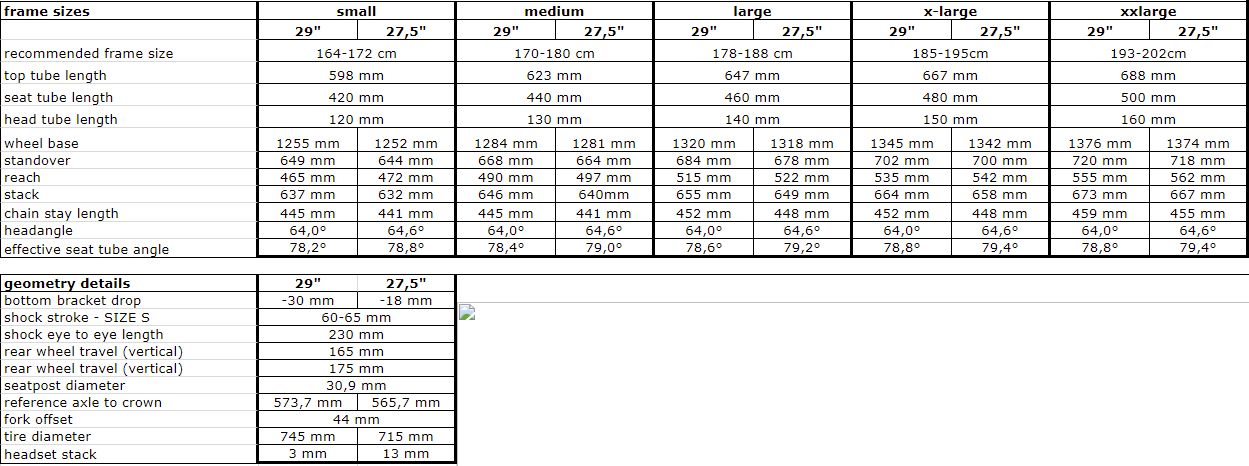
cant wait to check out this review…..nicolai bikes are for real, unsung champions of the frame building realm
cheers
The supre drive shifter felt incredibly stiff and hard to actuate when I tried it. Did you experience that at all? Is a clutch strength adjustment considered possible/intended with the damper?
Lal actually switched to a lighter weight oil in the damper as the standard spec a little while back. Our review bike had the update and felt great.
Shimano’s shifters tend to be a little stiffer than SRAM’s in general, but the one on the Nucleon didn’t feel any more so than usual.
@Leo The thumb effort needed to shift is largely a result of the cable routing. The Nucleon has fairly torturous routing so the friction is higher than on most other bikes. For this reason, we’ve been using Jagwire Ultra Slick cables to reduce friction (this has a big effect compared to regular Jagwire slick cables). With more normal cable routing, the thumb force for shifting is quite normal with the Supre Drive.
Good to know thanks for the info!